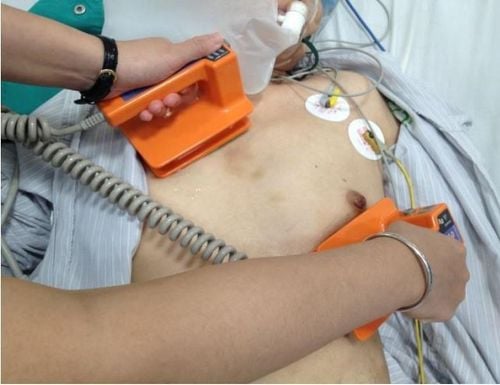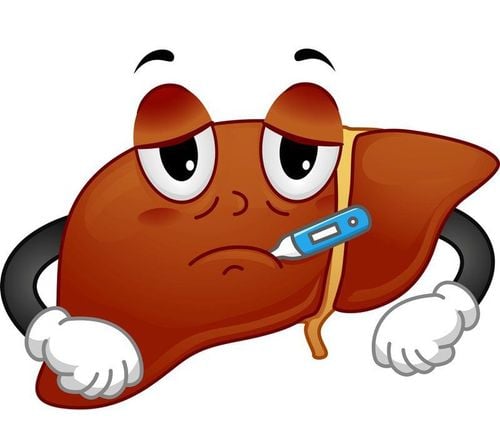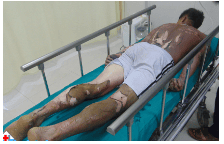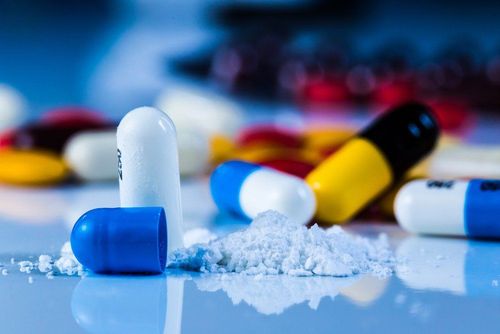This is an automatically translated article.
Posted by Doctor Pham Lan Huong - Pediatric Center - Vinmec Times City International Hospital
Toxic shock syndrome, caused by toxins produced by certain bacteria, can quickly affect several organs including the liver, lungs, and kidneys or cause serious conditions such as convulsions, bleeding, heart failure.
1. What is Toxic Shock Syndrome?
Toxic shock syndrome (TSS) is rare but very serious and can be life-threatening. TSS occurs suddenly after certain bacteria enter the bloodstream and produce toxins.
The syndrome can quickly affect several organs including the liver, lungs and kidneys or severe conditions such as convulsions, bleeding, heart failure.
Because TSS progresses rapidly, urgent medical treatment is needed as soon as possible. While TSS has been linked to women using tampons, the syndrome can occur in children, men, or other ages.
2.Signs and Symptoms of Toxic Shock Syndrome

Trẻ có dấu hiệu sốt cao,đau đầu có thể là biểu hiện của hội chứng sốc độc tố
Toxic shock syndrome comes on suddenly with the following manifestations:
High fever (body temperature ≥ 38.8 degrees Celsius) Signs of shock such as low blood pressure, lightheadedness, fainting, urinating less Headache Headache Fatigue Muscles A sunburn-like rash on any part of the body, including palms and soles, Diarrhea, vomiting, Thirsting May be accompanied by bloodshot, unusual red eyes under the eyelids or in the mouth or head. women's religion. The area around the injury site is swollen, red, and tight. In general, symptoms of TSS can develop as early as 12 hours after surgery. Symptoms usually develop within 3 to 5 days in women who are menstruating and using tampons inserted in the vagina.
3. Causes of Toxic Shock Syndrome
TSS is caused by toxins caused by some bacteria, 2 toxin-producing bacteria that can cause TSS are:
Staphylococcus aureus (SA) (Staphylococcus aureus) Group A Streptococcus Staphylococcus aureus found in the nose or on the skin of 30% of the population, in the vagina of 10-20% of women. These bacteria are usually not harmful, and cause only mild infections of the nose, throat, or skin.
A Staphylococcus aureus infection produces certain toxins that enter the bloodstream, which can cause a serious reaction that leads to TSS. Toxins enter the bloodstream through a skin wound, incision, or in menstruating women using a tampon or cup.
4. Diagnosis of toxic shock syndrome
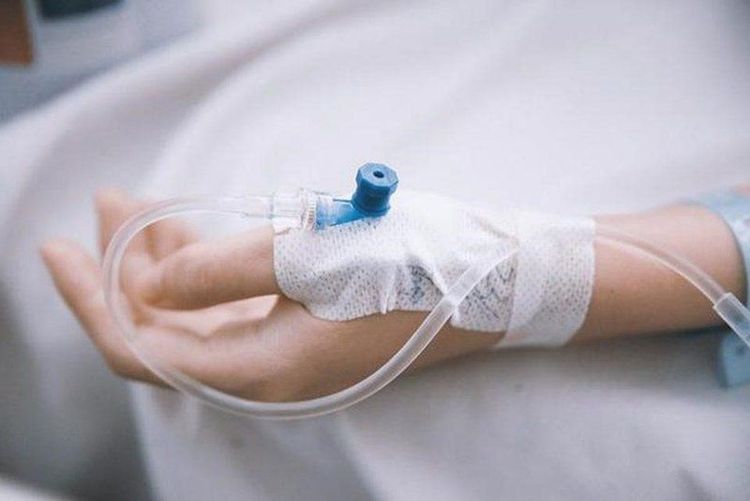
Bệnh nhân sẽ được truyền dịch khi mắc hội chứng sốc độc tố
When the physician suspects toxic shock syndrome, the patient will be prescribed intravenous fluids and antibiotics as soon as possible. To confirm the diagnosis, the doctor needs to take samples from sites of infection such as the skin, nose, vagina, and blood to look for bacteria that cause the disease. Other tests such as kidney function, liver function, abdominal ultrasound ... to look for signs of damage to other organs.
5. Toxic shock syndrome treatment
TSS cannot be treated at home, hospital care is a must to treat staph infections and related complications caused by TSS (eg Shock). Patients with TSS usually stay in the ICU for a few days, receiving intravenous antibiotics, fluids, and monitoring of blood pressure, breathing, and other signs of organ damage.
6. How to prevent toxic shock syndrome?

Rửa tay bằng xà phòng trước khi lấy hoặc đút băng vệ sinh trong âm đạo
TSS can be prevented by keeping all burns, wounds, scratches or bites by animals or insects clean.
Women who use vaginal tampons, menstrual cups, diaphragms, and cervical pads can prevent TSS by:
Follow the directions in the package insert exactly. Wash your hands with soap before inserting or removing tampons, Change vaginal tampons at least every 8 hours, or only use vaginal tampons for a short time during the day. Vinmec International General Hospital with a system of modern facilities, medical equipment and a team of experts and doctors with many years of experience in medical examination and treatment, patients can rest assured to visit. and hospital treatment.
To register for examination and treatment at Vinmec International General Hospital, you can contact Vinmec Health System nationwide, or register online HERE.





